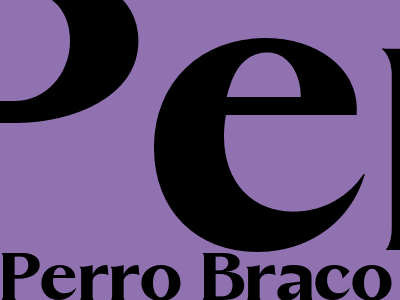A Complete Guide to the Perro Braco: Everything You Need to Know
Origin, History, and Appearance
The Perro Braco, a medium-sized versatile hunting dog, originated in Spain in the 16th century. Initially bred for hunting game birds such as partridges and rabbits, its versatility extends to retrieving, tracking, and pointing.
The breed is characterized by a distinctive appearance, featuring a sleek, muscular build with a short, dense coat that comes in a range of colors including white, chestnut, and liver. Their almond-shaped eyes, typically amber or hazel, exude a friendly and intelligent expression.
The Perro Braco's distinctive markings, known as "ticking," are unique to the breed and add to its visual appeal. These small, round spots, distributed throughout the coat, come in contrasting colors such as chestnut and white or liver and white.
Temperament and Personality
The Perro Braco is renowned for its gentle and affectionate demeanor, making it an excellent family companion. Its eagerness to please and innate loyalty extend to children, with whom it interacts remarkably well.
Despite its hunting instincts, the Perro Braco is not typically aggressive and exhibits a balanced temperament, contributing to its suitability as a house pet. The breed's intelligence makes it highly trainable, eager to learn, and obedient.
However, potential owners should be aware of the breed's high energy levels and need for regular exercise. Without sufficient physical and mental stimulation, the Perro Braco may become restless and resort to destructive behaviors.
Grooming and Care
The Perro Braco's short, dense coat requires minimal maintenance, with weekly brushing sufficient to remove loose hair and prevent mats. Its small size makes bathing infrequent, as needed, to maintain a healthy coat.
Like all breeds, the Perro Braco requires regular veterinary checkups, vaccinations, and parasite prevention. Its nails should be regularly trimmed to prevent overgrowth and ensure proper foot health.
Due to its hunting heritage, the Perro Braco has a natural instinct to chase small animals. Therefore, responsible ownership includes providing a safe and controlled environment when off-leash, ensuring the safety of both the dog and wildlife.
Health and Lifespan
The Perro Braco is generally a healthy and robust breed, with a life expectancy of 12-15 years. However, like other breeds, it is prone to certain health conditions, including:
- Hip dysplasia: A condition affecting the hip joint, leading to pain and lameness.
- Elbow dysplasia: A similar condition affecting the elbow joint.
- Von Willebrand disease: A blood clotting disorder that can lead to excessive bleeding.
Responsible breeders prioritize the health of their dogs and conduct thorough health screenings to minimize the risk of inherited conditions.
Training and Exercise
The Perro Braco is an active and intelligent breed that requires regular exercise and mental stimulation. Daily walks, interactive play sessions, and obedience training are essential for maintaining its physical and mental well-being.
Early socialization and training are crucial for the Perro Braco to develop into a well-rounded and obedient companion. Positive reinforcement and reward-based methods yield the best results.
Due to its hunting instincts, the Perro Braco has a strong prey drive. Therefore, it is essential to train and socialize the dog appropriately, especially around other animals, to prevent unwanted behaviors.
Conclusion
The Perro Braco is a versatile, affectionate, and low-maintenance breed that makes an exceptional companion and hunting partner. Its gentle nature, trainability, and rugged appearance have endeared it to dog enthusiasts around the globe.
By understanding the breed's history, temperament, grooming needs, health concerns, and training requirements, potential owners can provide the Perro Braco with a loving and fulfilling home.

Comments